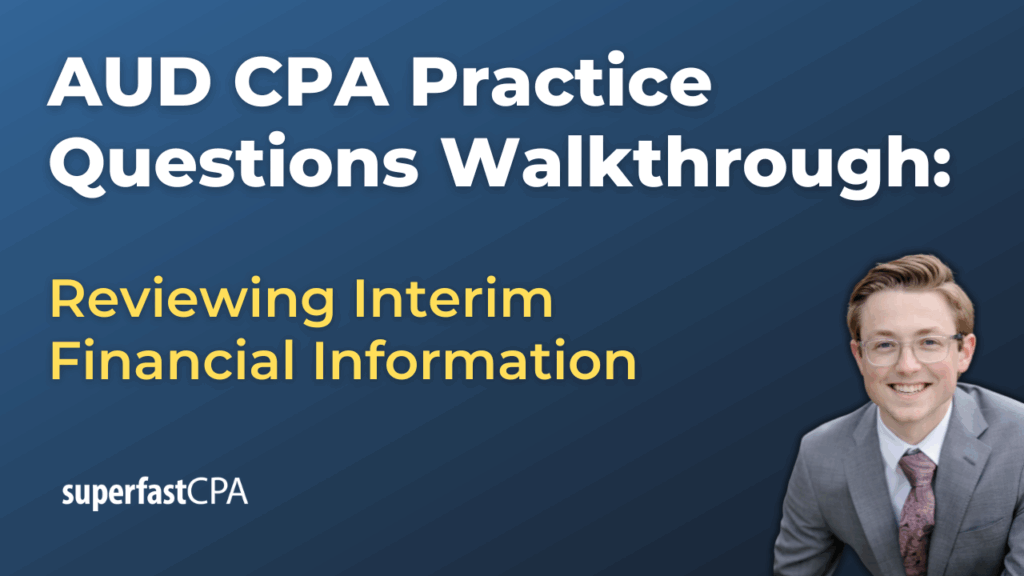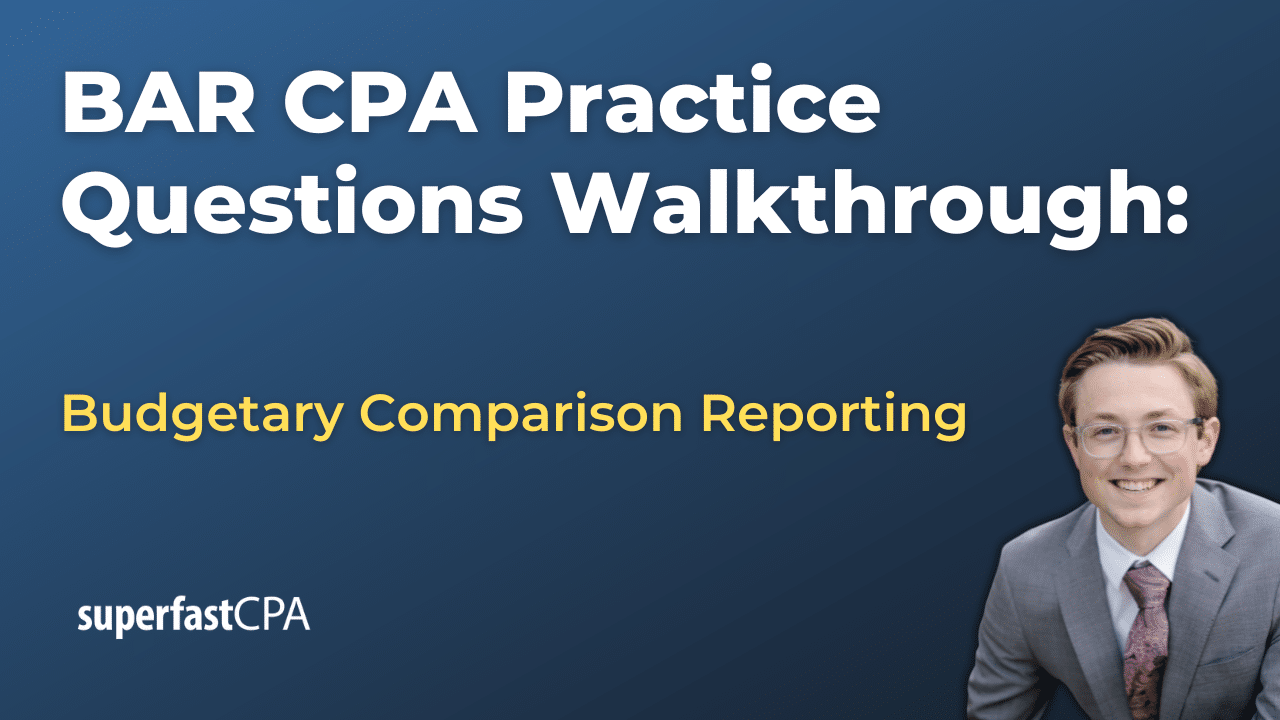In this video, we walk through 5 AUD practice questions teaching about reviewing interim financial information. These questions are from AUD content area 4 on the AICPA CPA exam blueprints: Forming Conclusions and Reporting
The best way to use this video is to pause each time we get to a new question in the video, and then make your own attempt at the question before watching us go through it.
Also be sure to watch one of our free webinars on the 6 “key ingredients” to an extremely effective & efficient CPA study process here…
Reviewing Interim Financial Information
In many audit environments—especially for companies reporting quarterly or in connection with public filings—auditors and accountants may be asked to review interim financial information. Unlike a full audit, an interim review provides limited assurance, but it still requires professional judgment, specific procedures, and compliance with relevant standards. Here’s a practical breakdown of what an auditor should consider when taking on this type of engagement.
The Purpose of an Interim Review
The objective of an interim review is to provide limited assurance that the accountant is not aware of any material modifications that should be made to the interim financial information for it to be in conformity with the applicable financial reporting framework (such as GAAP or IFRS).
This type of review does not include substantive testing or evaluation of internal controls in the way an audit does. For example, if an accountant is reviewing a company’s second-quarter balance sheet and income statement, they are not providing an audit opinion—they’re simply stating that, based on their review, nothing came to their attention indicating a material misstatement.
Which Standards Apply: PCAOB vs. AICPA
One of the first considerations is which standards apply, which depends on whether the entity is a public company (issuer) or a private company (nonissuer).
- For public companies, interim reviews are performed under PCAOB standards, specifically AS 4105.
- For private companies, reviews are governed by AICPA standards. If the review is of interim financial information accompanying audited financials, AU-C Section 930 applies. If it’s a standalone review of unaudited financial statements, SSARS (Statements on Standards for Accounting and Review Services) apply.
For example, a CPA firm reviewing Q3 results for a publicly traded company must follow PCAOB standards, whereas a review for a privately owned business preparing financials for a lender would follow SSARS.
Procedures Performed During an Interim Review
Although less extensive than an audit, an interim review still involves targeted procedures to support limited assurance. These typically include:
- Inquiries of management about unusual transactions, fraud risks, and changes in operations.
- Analytical procedures, such as comparing disaggregated revenue, analyzing gross margins over time, or reviewing account fluctuations.
- Reading board meeting minutes.
- Ensuring the interim financials tie to underlying accounting records.
For instance, if gross profit margin in Q2 suddenly drops compared to Q1, the accountant would ask management to explain the variance and corroborate the explanation through financial data or documentation.
Key Differences Between Issuer and Nonissuer Reviews
There are important differences in what’s required when reviewing interim financials for a public company versus a private one.
- PCAOB reviews require evaluating the design of internal controls relevant to the preparation of the interim financial information. This is not required for nonissuers under SSARS.
- Communication with the predecessor auditor is required under PCAOB standards but not under SSARS.
- Public company reviews also require considering the results of the most recent annual audit.
So, if a CPA is reviewing Q1 financials for a new public client, they must reach out to the predecessor auditor for information, something that would not be necessary for a private client engagement.
Reporting Considerations
The report from a review engagement clearly communicates that the engagement was not an audit and expresses limited assurance. Key points:
- The accountant must be independent to issue a review report.
- A review report can be issued on just one financial statement, such as the balance sheet, as long as the report states what was and was not reviewed.
- If reviewed interim financial information is presented alongside audited financials, the unaudited information must be clearly labeled as such.
For example, if an annual audit report is included with reviewed interim Q1 financials, the financial statements must indicate that the Q1 information is unaudited to avoid confusion.
What If the Interim Review Report Is Included in an SEC Filing?
When reviewed interim financials are included in a registration statement filed with the SEC, a special disclosure is required. The prospectus must clearly state that the auditor’s review report is not considered part of the registration statement unless the auditor consents to its inclusion.
This protects the auditor from unintended liability under the Securities Act of 1933. If the auditor has not provided written consent, their review report cannot legally be treated as part of the filing.
For example, if a company wants to raise capital and includes reviewed Q2 financials in the filing, the prospectus must say: “The accountant’s review report is not part of this registration statement unless the accountant has given written consent.”











